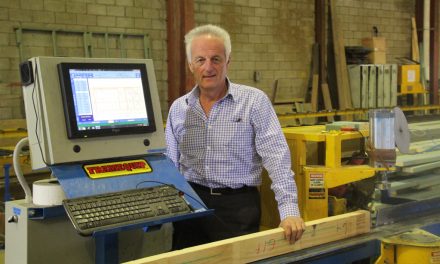So last Tuesday, rather than examining my chakras, I pondered wind load coefficients. These coefficients are a number that represent the relative magnitude of the wind load on a roof surface.
Think of a building as being like a sharp-edged rock in the middle of a turbulent river flow. The general run of the river is powerful in itself, but the eddies are even more energetic, whipping and swirling around the rocks.
Water hits the front face of our rock and pressurises it. Forced upwards, the water jets up past the front top edge, and into the main stream’s flow. As a result, a vicious horizontal vortex develops on the leading edge. Whipped by the eddy, the water then rolls back down. And, if the rock is long enough, the flow eventually reattaches to the top surface further downstream.
You could now imagine that if the front-top edge was rounded and sloped through eons of erosion, then the flow could curve more easily from the front-face onto the top surface. With its smoother passage there are less eddies, and less fluctuations within the extremes of water pressure.
So, just like our rock, the forces on a building are affected in part by the speed and mass of the wind flow and in part by the shape of the building and the turbulence that generates. The more bluff the overall building is in the wind flow, then the higher the pressures. Meanwhile, the roof pitches are a way of streamlining wind to the top surface, and this affects the magnitude of the pressures on the roof itself.
The overall building shape and the specific roof slopes affect the roof pressures. These are represented numerically by the wind pressure coefficients that interrupted my yoga lesson.
With that knowledge, now consider the monstrous imposition on our roof wind loads caused by the solar panels shown in this photo. The cells are perfect for creating drag, they look and act like the air brakes on an aircraft! The wind loads imposed locally on the roof sheeting by the panel legs are colossal.
But it’s not just the additional surface area of the panels. The additional wind turbulence will affect the downstream walls and roof surfaces more generally. Wind eddies will whip and snap around the panels, and pound the building surfaces.
The best hope for this particular building is that the bracket fixings are weaker than the roof sheet fixings and that the cells fly off into the bush at the first hint of decent wind. But if the panel fixings don’t go first, you could just about guarantee that the roof would fail prematurely.
The most recent version of the Australian Standard for wind loads actually gives wind pressure coefficients for solar panels in some situations. However, it seems that these are specifically for the design of the panels and their fixings. The wind loads on the roof overall should be lower because the pressure fluctuations average out over the larger surfaces.
My gut feeling is that the wind loads on the roof, where the panels are laid close to and parallel to the roof surface and not right near an edge, should be close to our normal design for wind loads. Probably uplifts are slightly higher but countering that is the weight of the panels themselves. So far, I haven’t been able to find anything definitive. I will let you know if I do.
Most certainly, there is no data for anything like the panel arrangement in the photo. If anything like this arrangement comes across your desk then run a mile! Or get your engineering guru involved.
Om!
Paul Davis is an independent structural engineer managing his own consulting firm Project X Solutions Pty Ltd. The views in this column are Paul’s and do not reflect the opinions of TimberTrader News.
Phone: 02 4576 1555 Email: pauldavis@timbernews.com










